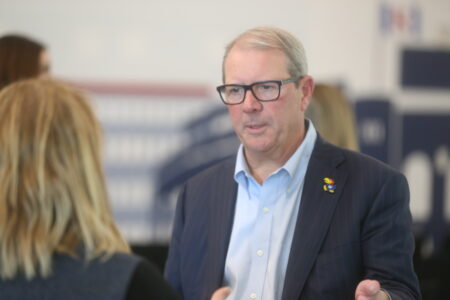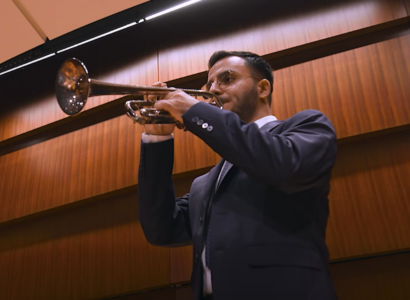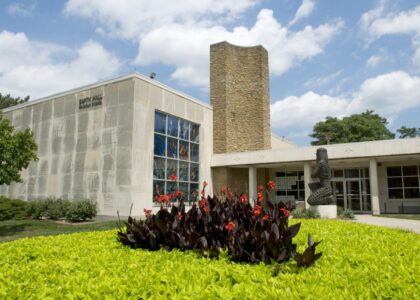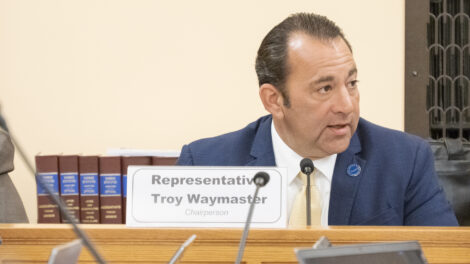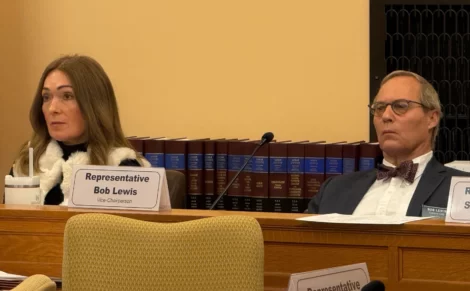50 years later, firebombing of Kansas Union leaves lasting impact on Lawrence history

The April 20, 1970, fire in the Kansas Union left the Union Ballroom in a shambles.
Fifty years ago today, Lawrence and the University of Kansas campus were the epicenter of nationwide unrest over civil rights and simmering tensions amid the country’s involvement in the Vietnam War.
In the days and weeks leading up to April 20, 1970, an unsettled feeling had already begun to take hold of the campus. The president of the KU Black Student Union told black students to “arm themselves,” citing attempted violence against black students on campus.
The Kappa Sigma fraternity was set on fire, causing damages equivalent to $1.3 million in today’s money. A furniture store in downtown Lawrence was firebombed and destroyed.
Those tensions came to a head the evening of April 20, leading Lawrence into what would later be referred to as the “days of rage.”
At a local school board meeting, some 200 members of the African American community were lobbying the board for a more inclusive and robust black studies curriculum. The board voted to table the discussion, and community members stormed out of the meeting.
Within 10 minutes of the walkout, the Lawrence Fire Department began getting calls reporting vandalism and fires at Lawrence High School. Responding officers confirmed damage, likely from Molotov cocktails — essentially bottles filled with lighter fluid and lit on fire — and reported hearing gunshots as they responded to the scene.

Crews battle the April 20, 1970 Kansas Union fire.
Then, at 10:38 p.m., a device in the ceiling of the women’s restroom on the 6th floor of the Kansas Union exploded.
A night manager at the Union reported he “heard something pop” that sounded like a lightbulb, and the floor of the building soon became engulfed in smoke and flames.
The ensuing fire burned for nearly three hours, taking the Lawrence Fire Department and some 100 student volunteers to finally extinguish the flames.
In total, the damage to the top two floors of the building resulted in between $1 to 2 million in damage, the Journal-World reported in the days after the fire. That damage equates to between $6.6 million and 13.3 million today.
It was clear from the beginning that the fire was no accident. Investigators found accelerant and matchbooks strung together near the site of the explosion, near the Pine Room. Though there were suspects over the years, no arrests were ever made.
William Towns, a historian who wrote his doctoral dissertation at KU on the history of the Union, told the Journal-World the decision not to more strenuously press to charge someone with the crime may have been deliberate.
E. Laurence Chalmers, KU’s chancellor at the time of the firebombing, tried to keep a lid on the campus tensions, Towns said. KU and the town of Lawrence were inundated with racial animus at the time, and, based on Towns’ research, the primary suspects in setting the fire were African-American.
“They probably knew who did it,” Towns said. “But I think Chalmers chose wisely not to pursue it, because I think that would have just added fuel to the fire, no pun intended. I think they were trying to keep a lid on tensions.”
Chalmers, who died in 2009, said in the days following the fire that it was set by a “pyromaniac,” according to Journal-World archives — the former chancellor always had a “knack for the obvious,” Towns said with a laugh.
Rumors abounded in the following weeks and months that the fire could have been set by a number of vigilante groups, including the Students for a Democratic Society and the Weathermen. But the fire’s origins 50 years later still remain a mystery.
This far along, who set it likely doesn’t matter — the statute of limitations on the crime ran out in the 70s — and Towns said in his opinion, it’s probably best that officials at the time chose not to pursue charges since the arsonist could have been any number of people.
Ultimately, the Kansas Union was able to remain operational following the fire and was back to full capacity within a year of the blaze. Now, Towns said, the unstable time in KU’s history becomes part of a greater history that is the union building.
Just past the 100th anniversary of when the building was chartered, the union is central in many ways to the history of Lawrence for most of the 20th century, Towns said. Established in 1919 as a memorial to students who died in World War I — the first American officer who died in the war was KU student William T. Fitzsimons — the impact 50 years on from the 1970 fire speaks to the symbolism the building has as a standing representation of American history.
The late 1960s and early 70s in Lawrence serve as a seminal moment in history that hasn’t quite been matched. Towns said, in the sense that there were so many different things going on at once.
The United States, for example, was simultaneously navigating fundamental changes on civil rights, the Black Power movement, a sweeping anti-war sentiment and an anti-establishment, counterculture movement.
In the months following the union blaze, Lawrence would grapple with many of those same issues. KU’s classes were canceled early, the university’s commencement on the hill did not take place, a black student — Rick “Tiger” Dowdell — and a white student — Nick Rice — were killed in separate police violence incidents, and a general protest culture overtook the town for months for a myriad reasons.
“You may see some isolated things (today) that are similar to one or two of those things, but it’s not the same mix. And that’s not to diminish any era or anyone else’s concerns (of events that have happened since),” Towns said.
“(The fire) is an aspect of a very interesting history.”

Fireman douse water on the Kansas Union fire as a blaze takes over the top two floors of the building. The April 20, 1970 fire was among the many instances of unrest that year.
David Mucci, the current director of the Kansas Union, said he sees parallels between how the university community responded to the firebombing in 1970, and how they are in the process of responding to the COVID-19 pandemic today.
“There was this sense of everybody, despite the urgency of the moment and the difficulties it presented, of just acting and pulling together and trying to do what they could to resolve the situation,” he said. “That was a tragic moment in a very tempestuous semester for KU.”
Until the pandemic began to take over the university’s daily operations, Mucci said they had planned some educational sessions and seminars to mark the anniversary of the firebombing.
And though those plans have been canceled, there can still be lessons learned 50 years later, he said.
“You can look at today and say it’s a difficult moment, problematic, but people will always come together and find solutions. That’s hopefully the lesson,” he said.
As such, the lasting impact of a tumultuous time for the Lawrence community, and specifically for the Kansas Union, Mucci said, was that it will serve as an ambivalent moment in the building’s history.
Something tragic, but with layers of hope mixed in.
Editor’s note: This story has been updated to clarify that the 1970 graduation ceremony was not canceled, but the traditional walk down the hill did not take place.



